
Over the last nine months, we’ve heard from thousands of people from across the country about the negatives of the COVID-19 pandemic — the shutdown or postponement of services, ever-increasing financial barriers, feelings of isolation — and the way it’s exacerbated an already-precarious situation for many who have been waiting for the support they need. We’ve also heard some silver linings, from people who have used this time to prioritize their care, to reach out for help for the first time, and to get support from the comfort of their own space.
Use the hashtags #EDAW2021 and #WhatHappenedWhileWeWaited to share your story. Click below for a helpful document from the National Initiative for Eating Disorders on factors to consider when talking about your experience in a public setting.
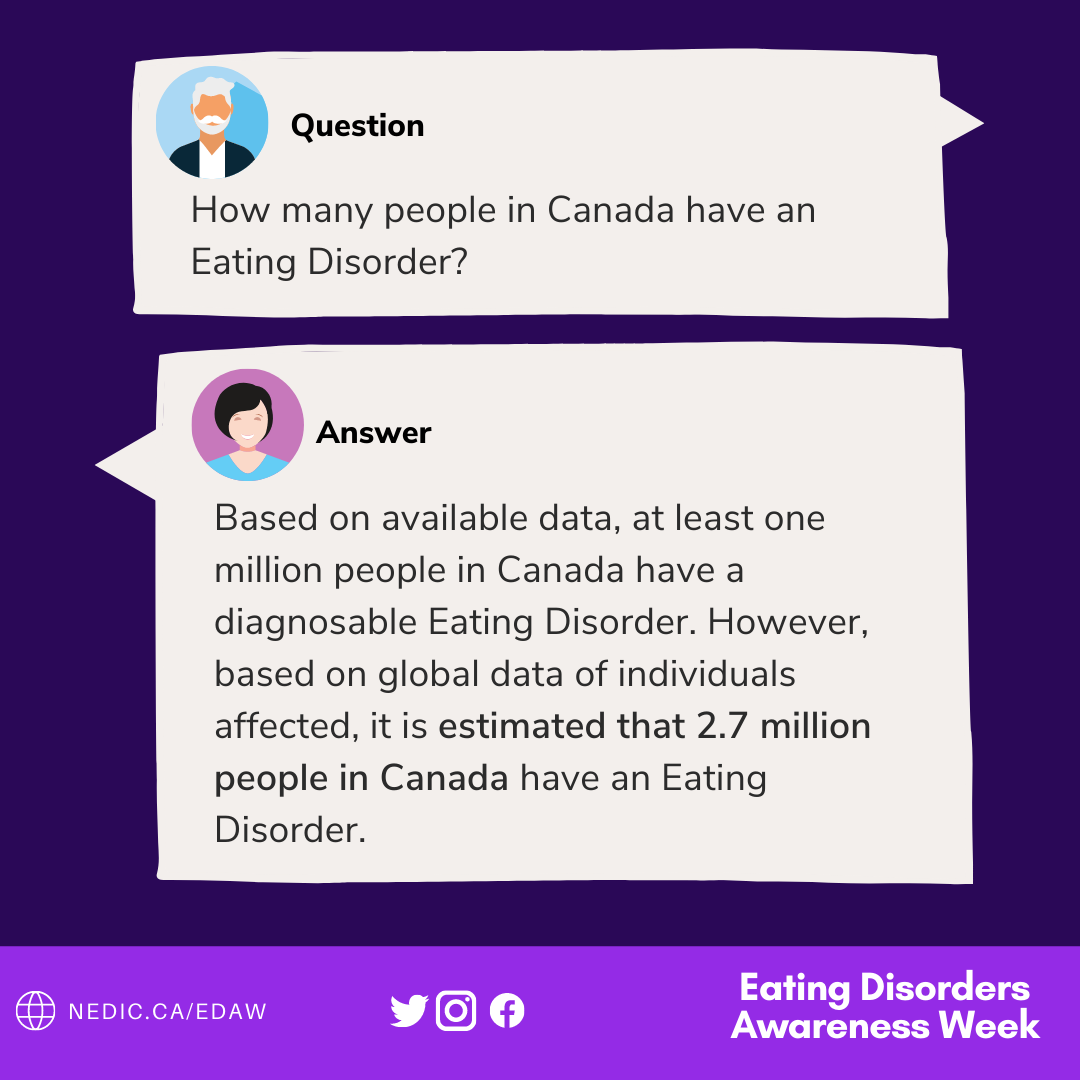
Answer: Based on available data, at least one million people in Canada have a diagnosable eating disorder. However, based on global data of individuals affected, it is estimated that 2.7 million people in Canada have an eating disorder.

Answer: Numerous factors contribute to knowing the exact prevalence of eating disorders in Canada. Let's talk about a few of them.
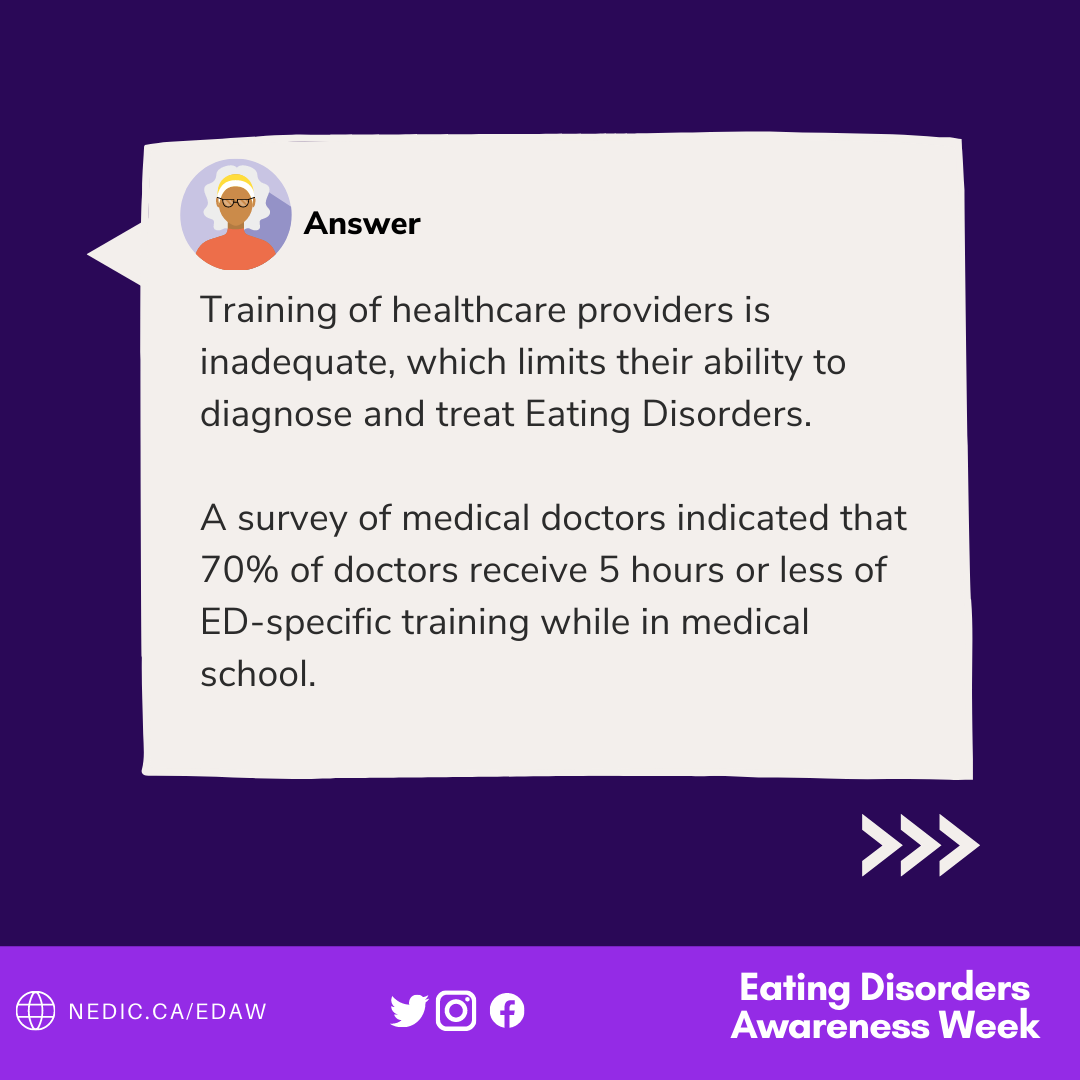
A survey of medical doctors indicated that 70% of doctors receive 5 hours or less of ED-specific training while in medical school.
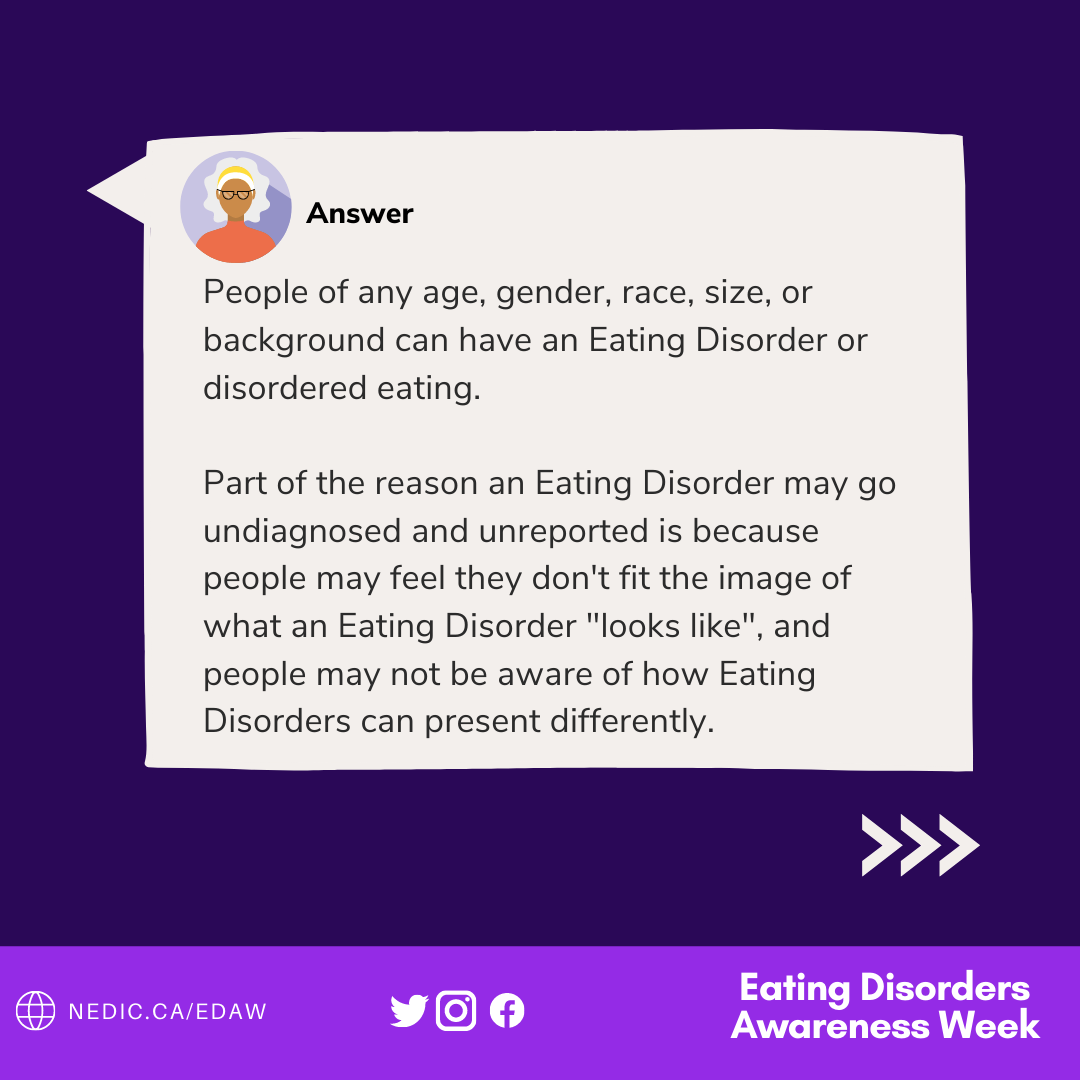
Part of the reason an eating disorder may go undiagnosed and unreported is because people may feel they don't fit the image of what an eating disorder "looks like" and people may not be aware of how eating disorders can present differently.
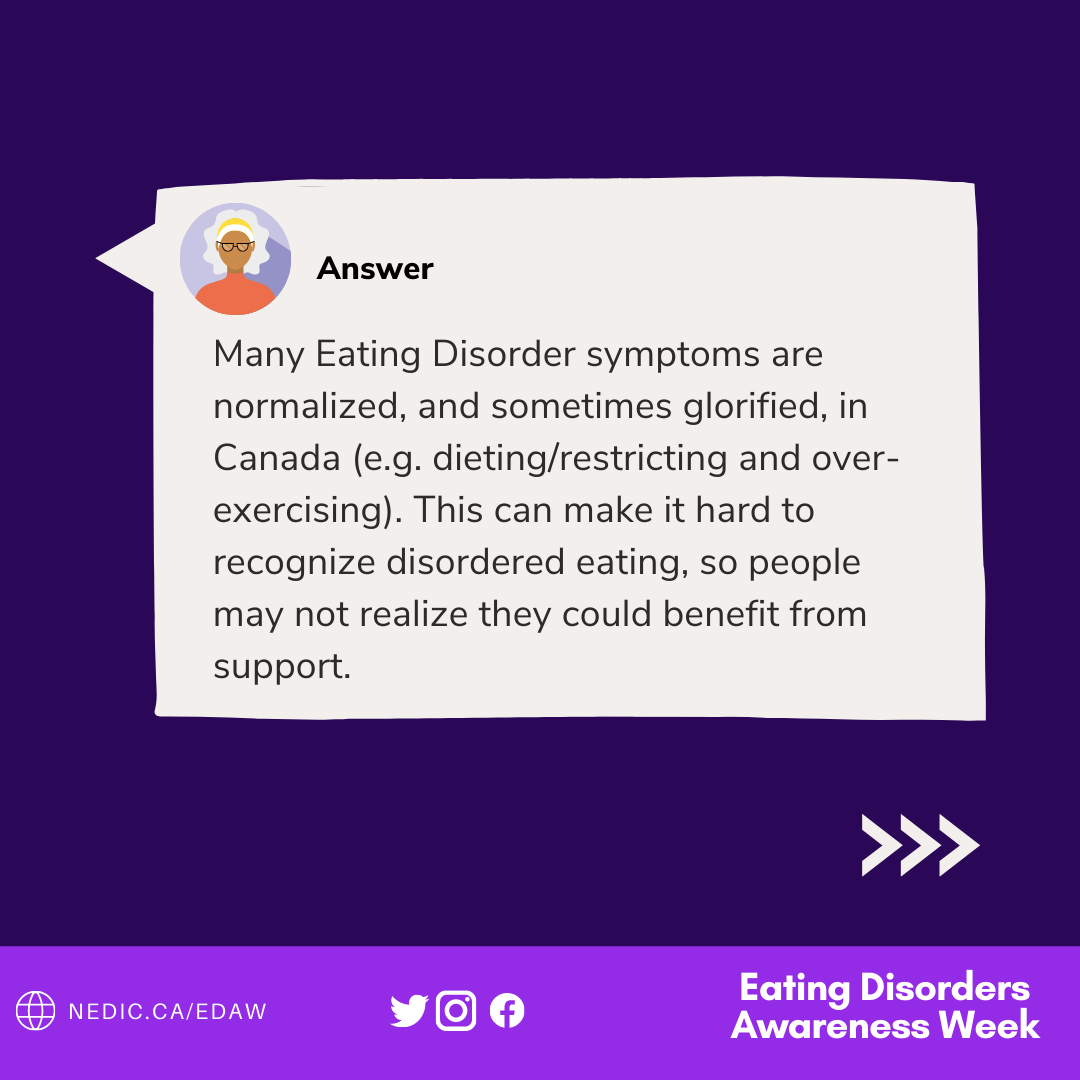
This can make it hard to recognize disordered eating, so people may not realize they could benefit from support.
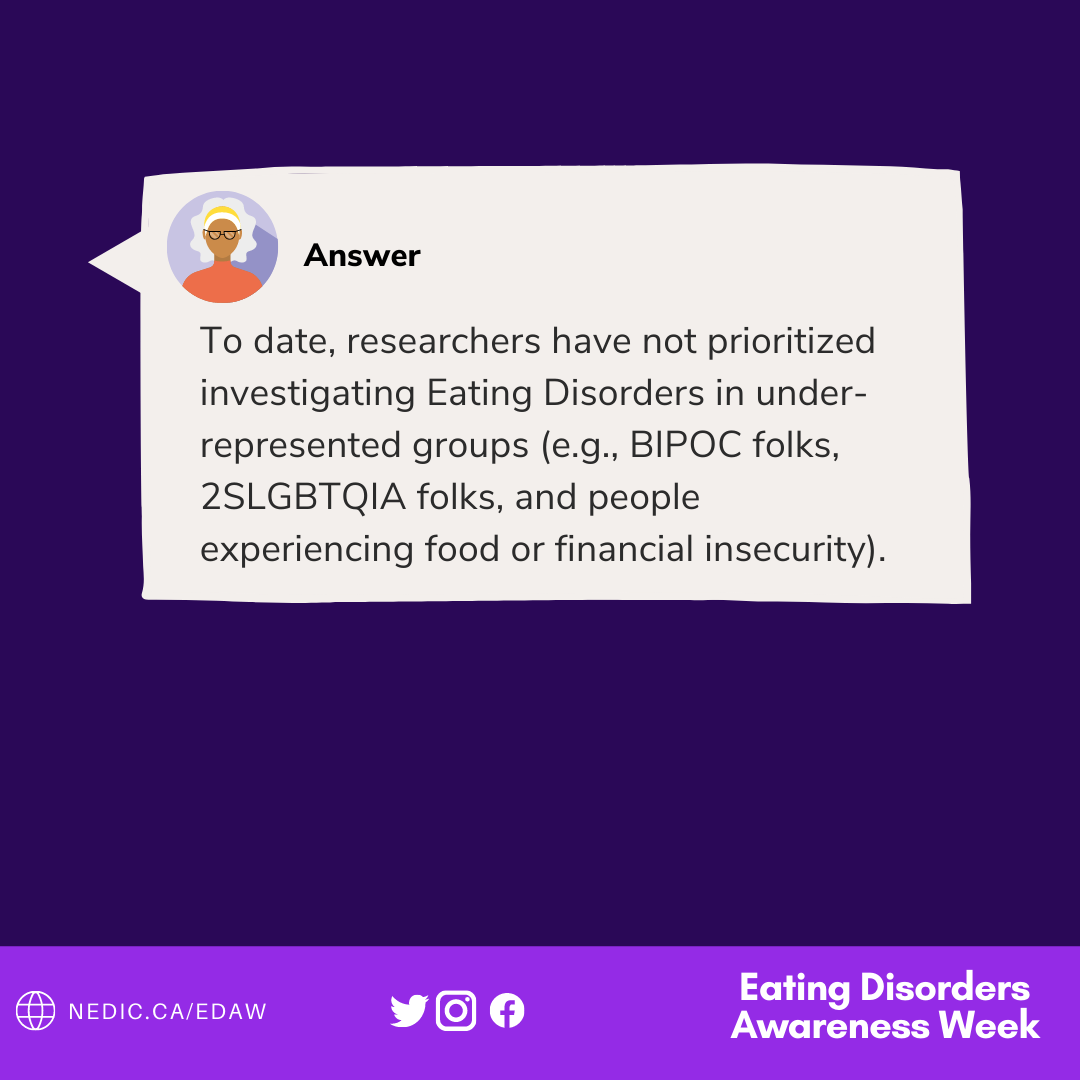
(e.g. BIPOC folks, 2SLGBTQIA folks, and people experiencing food or financial insecurity)
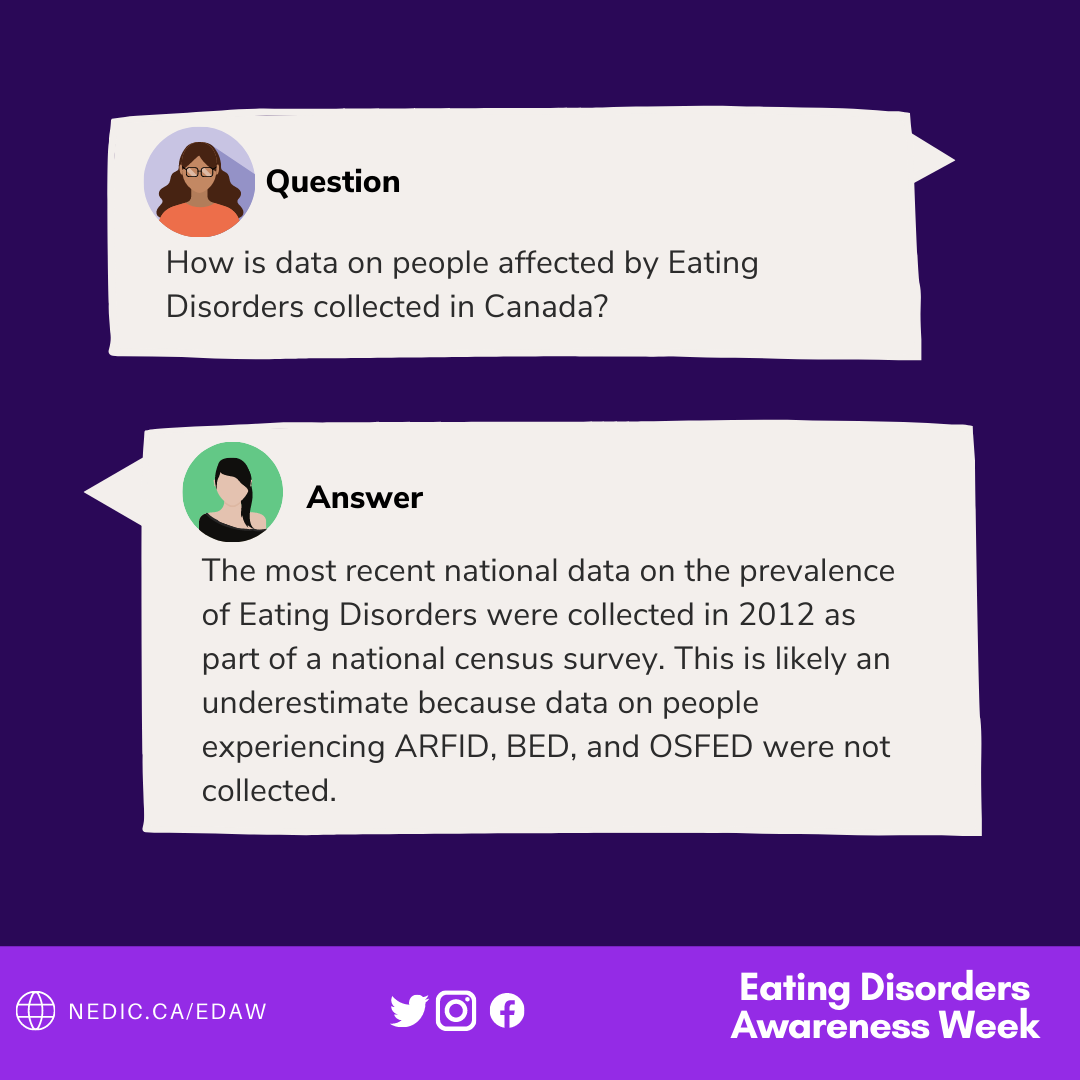
Answer: The most recent national data on the prevalence of eating disorders were collected in 2012 as a part of a national census survey. This is likely an underestimate because data on people experiencing ARFID, BED, and OSFED were not collected.
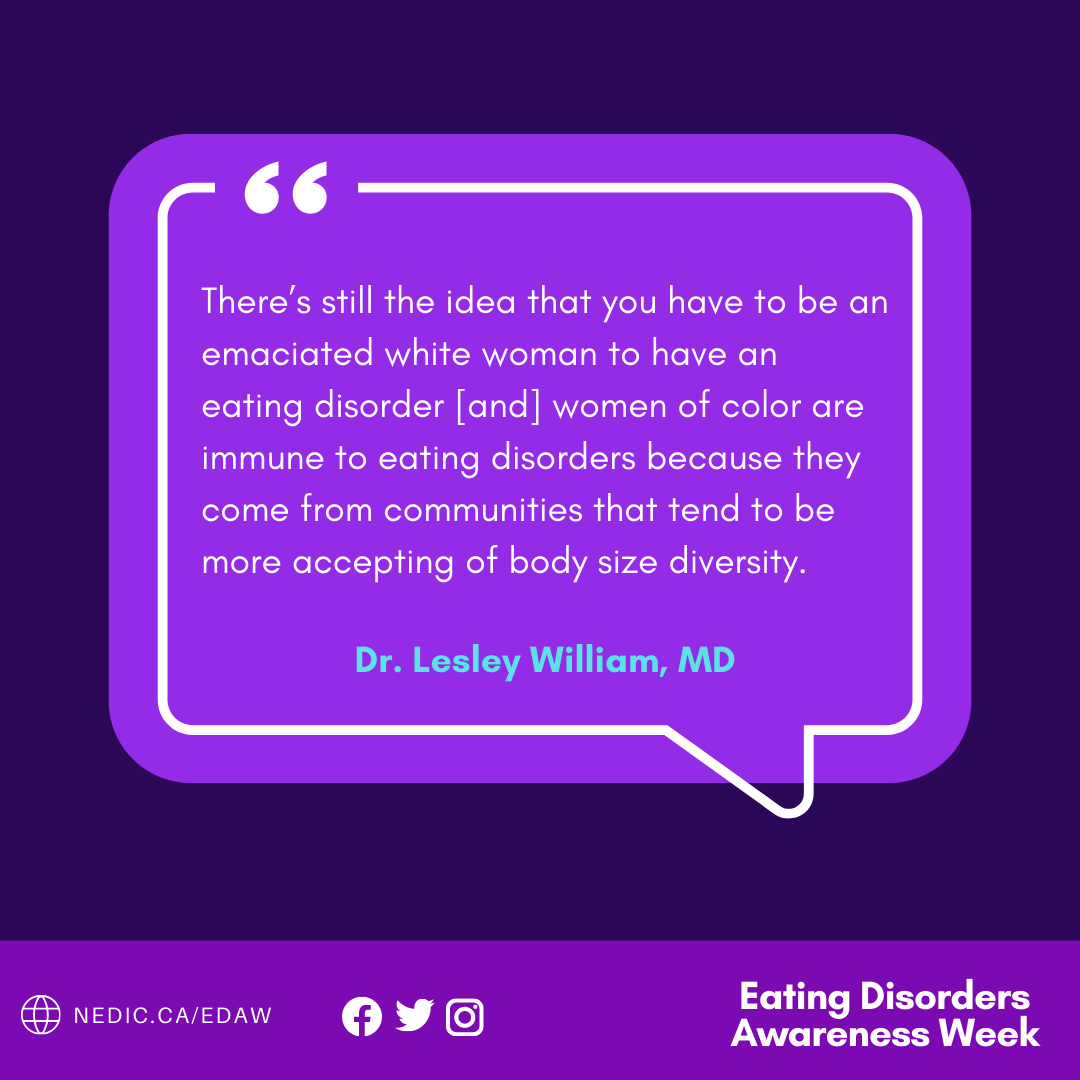
"There's still the idea that you have to be an emaciated white woman to have an eating disorder [and] women of color are immune to eating disorders because they come from communities that tend to be more accepting of body size diversity."
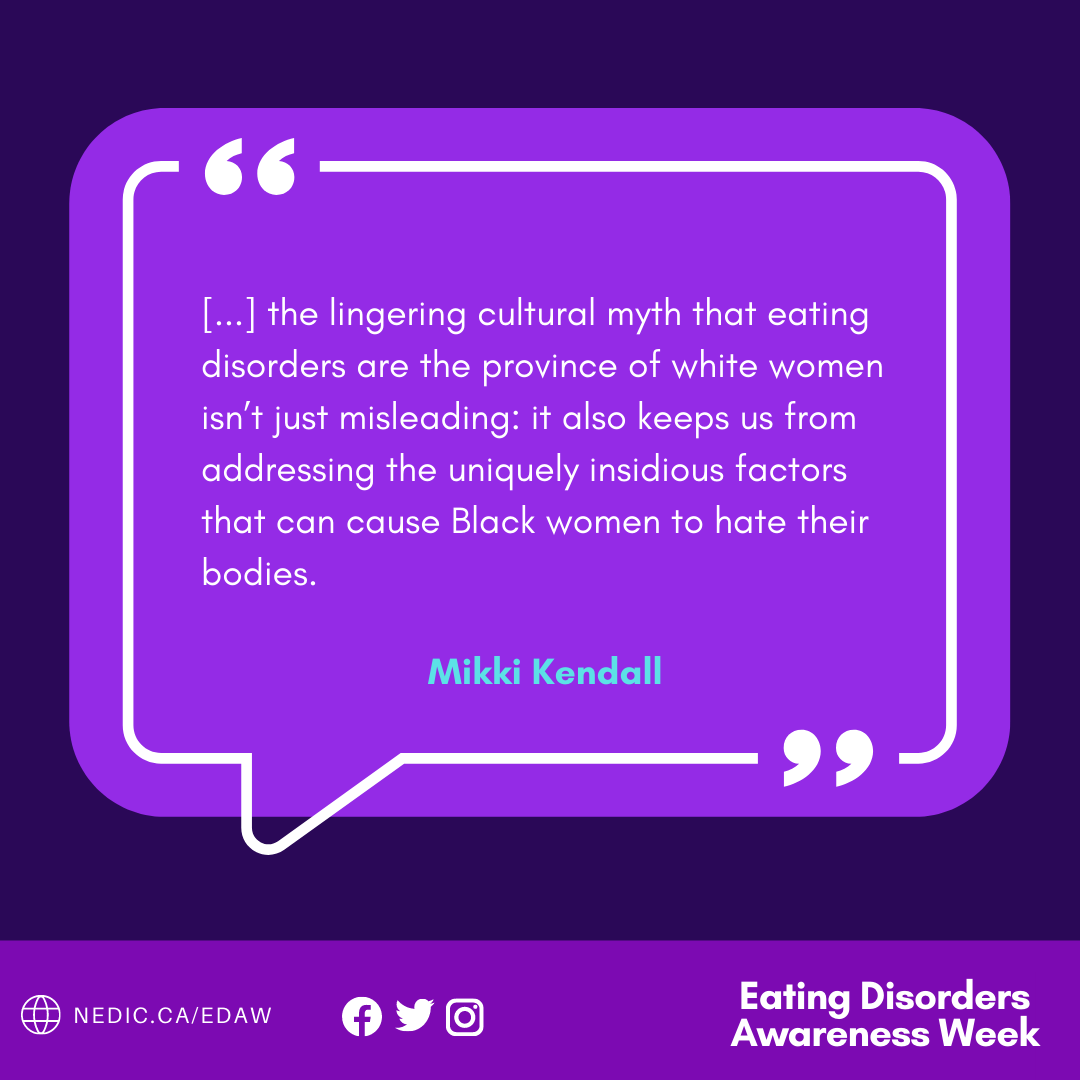
"...the lingering cultural myth that eating disorders are the province of white women isn't just misleading: it also keeps us from addressing the uniquely insidious factors that can cause Black women to hate their bodies."
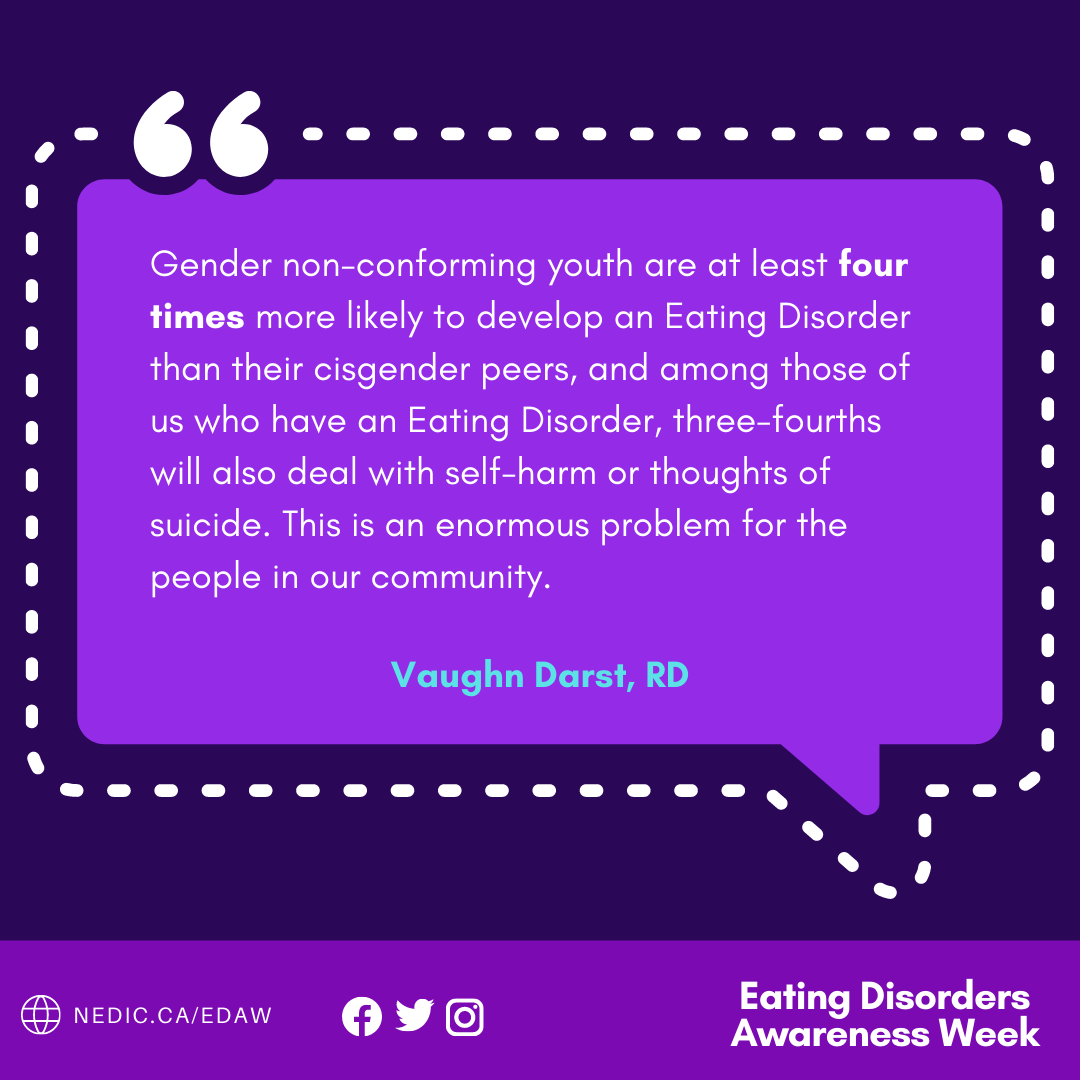
"Gender non-conforming youth are at least four times more likely to develop an eating disorder than their cisgender peers, and among those of us who have an eating disorder, three-fourths will also deal with self-harm or thoughts of suicide. This is an enormous problem for the people in our community."
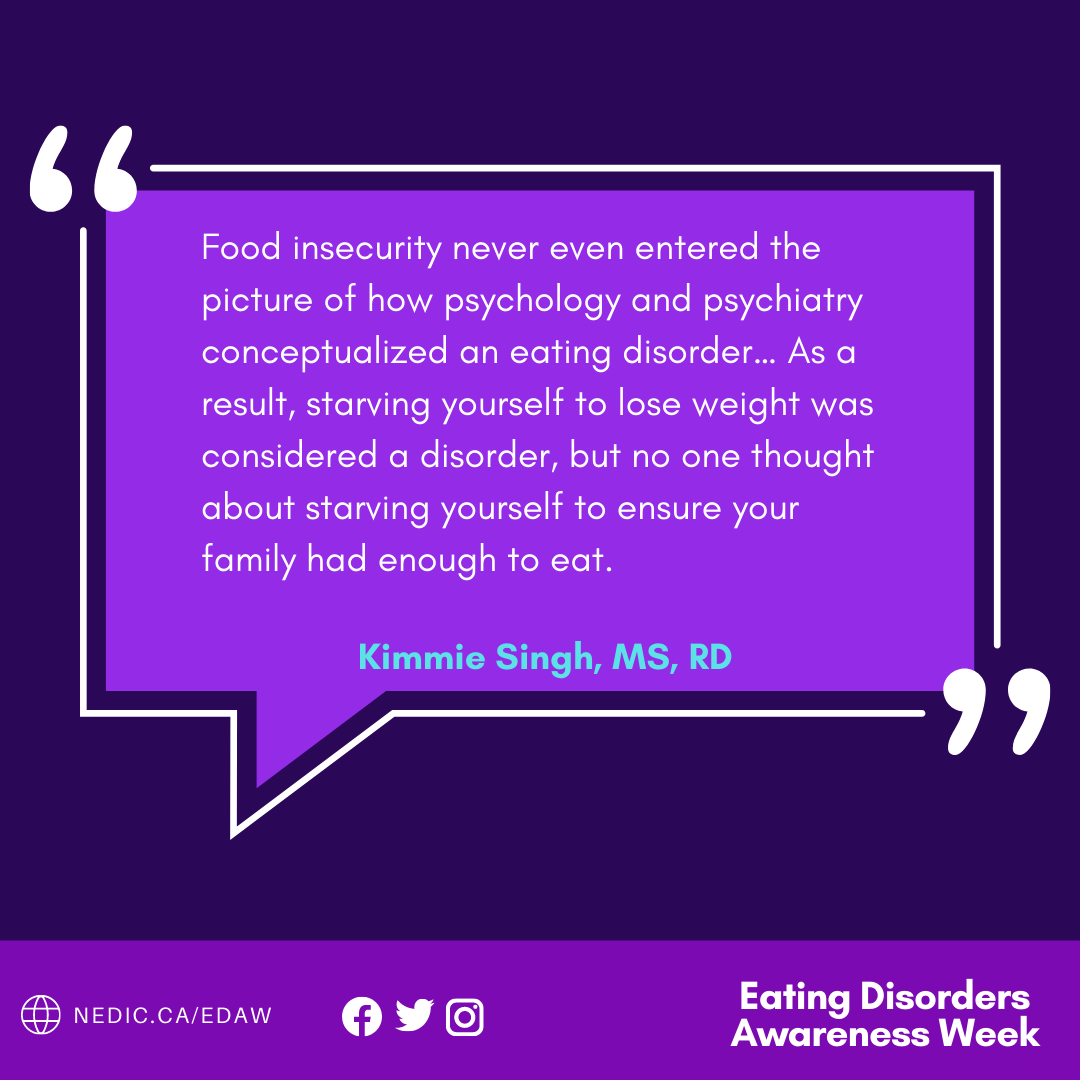
"Food insecurity never even entered the picture of how psychology and psychiatry conceptualized an eating disorder... As a result, starving yourself to lose weight was considered a disorder, but no one thought about starving yourself to ensure your family had enough to eat."
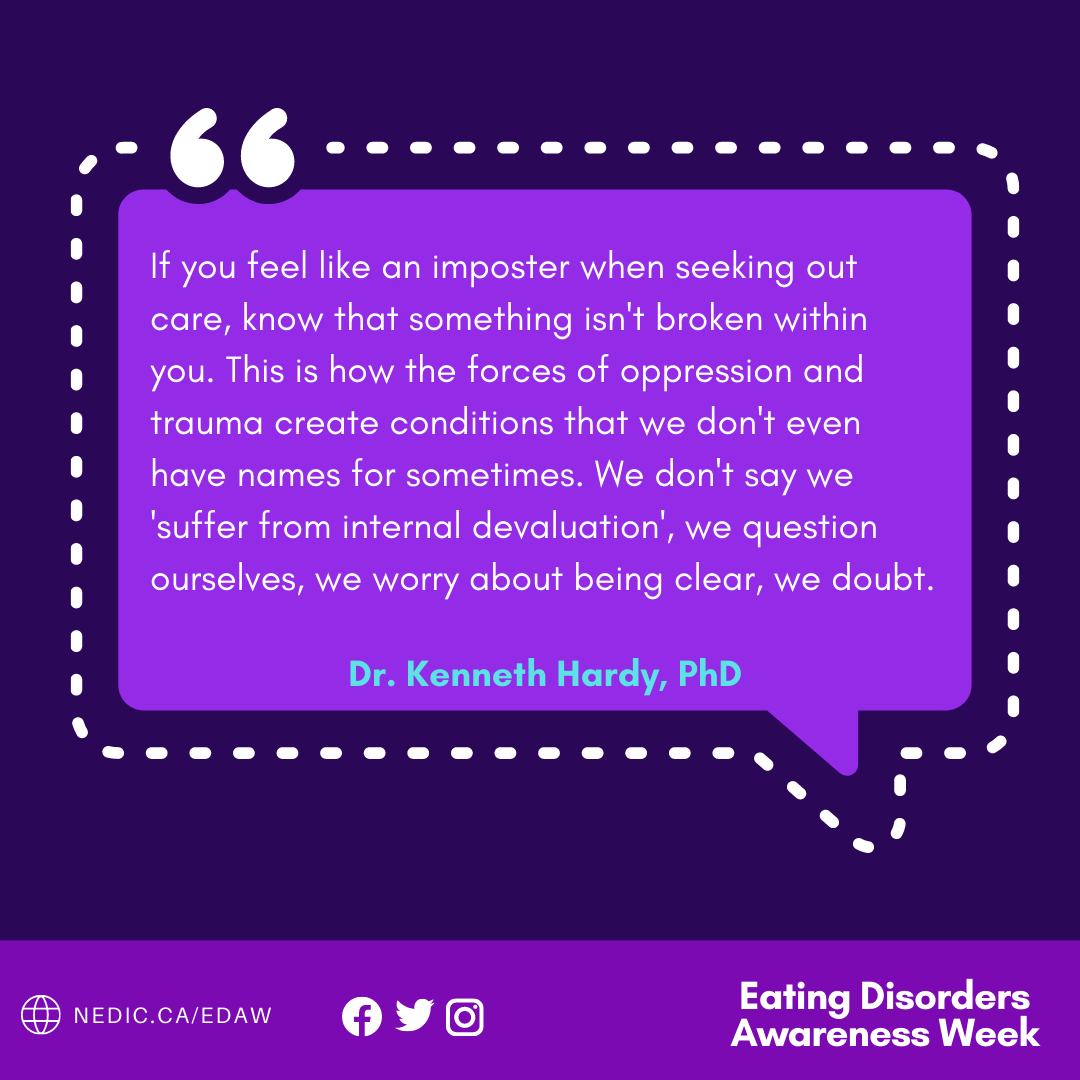
"If you feel like an imposter when seeking out care, know that something isn't broken within you. This is how the forces of oppression and trauma create conditions that we don't even have names for sometimes. We don't say we 'suffer from internal devaluation', we question ourselves, we worry about being clear, we doubt."
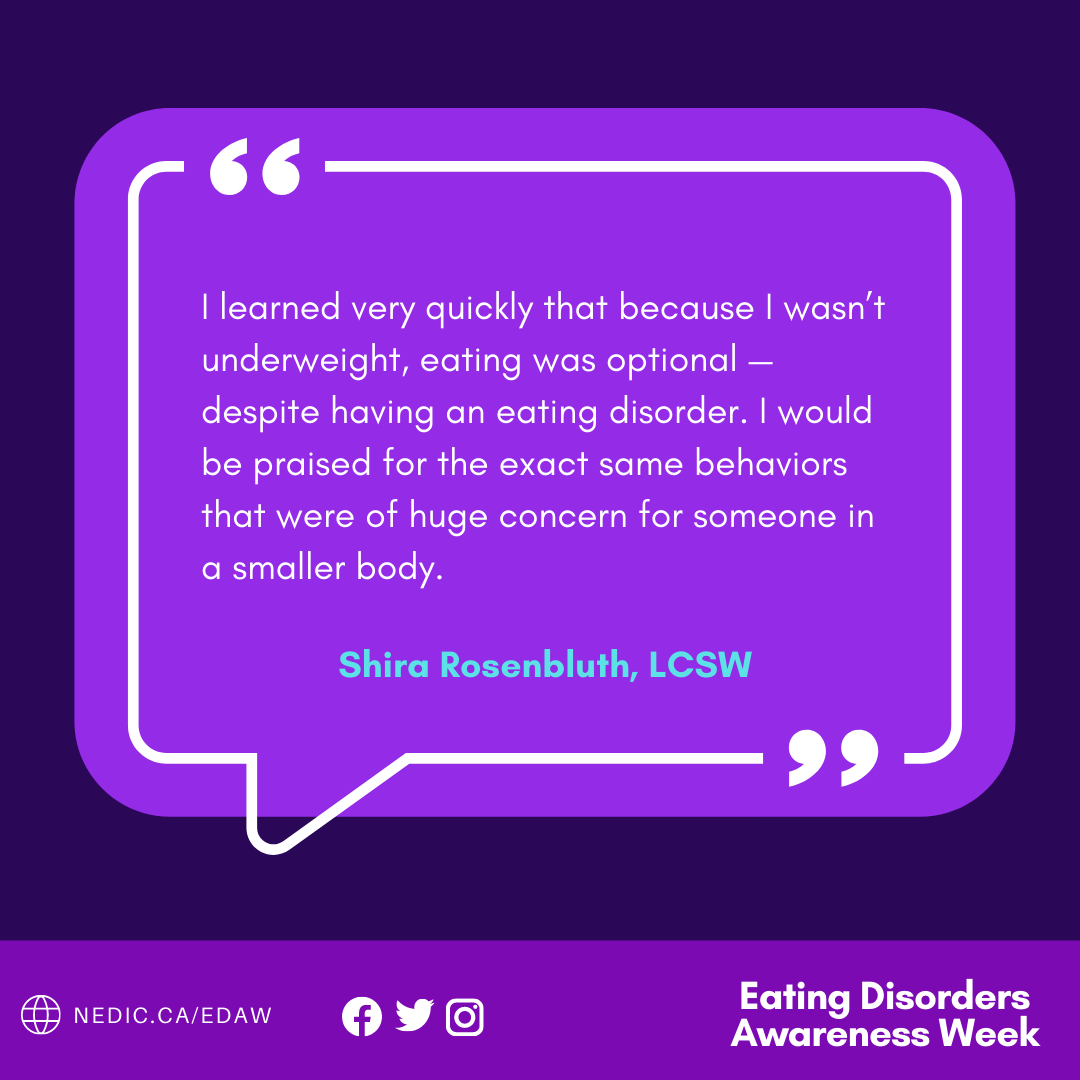
"I learned very quickly that because I wasn't underweight, eating was optional -- despite having an eating disorder. I would be praised for the exact same behaviors that were of huge concern for someone in a smaller body."
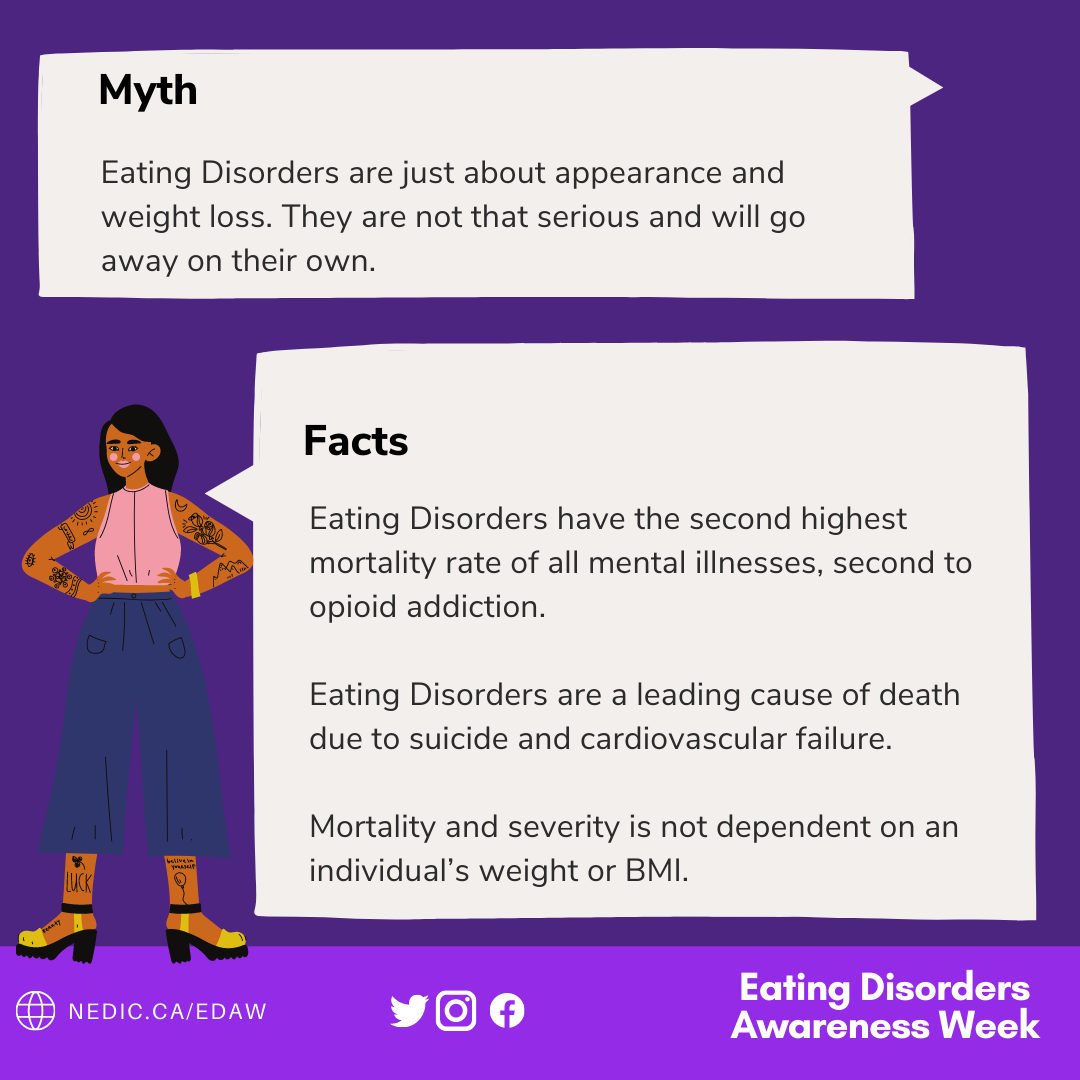
Facts
Eating disorders have the second highest mortality rate of all mental illnesses, second to opioid addiction.
Eating disorders are a leading cause of death due to suicide and cardiovascular failure.
Mortality and severity is not dependent on an individual's weight or BMI.
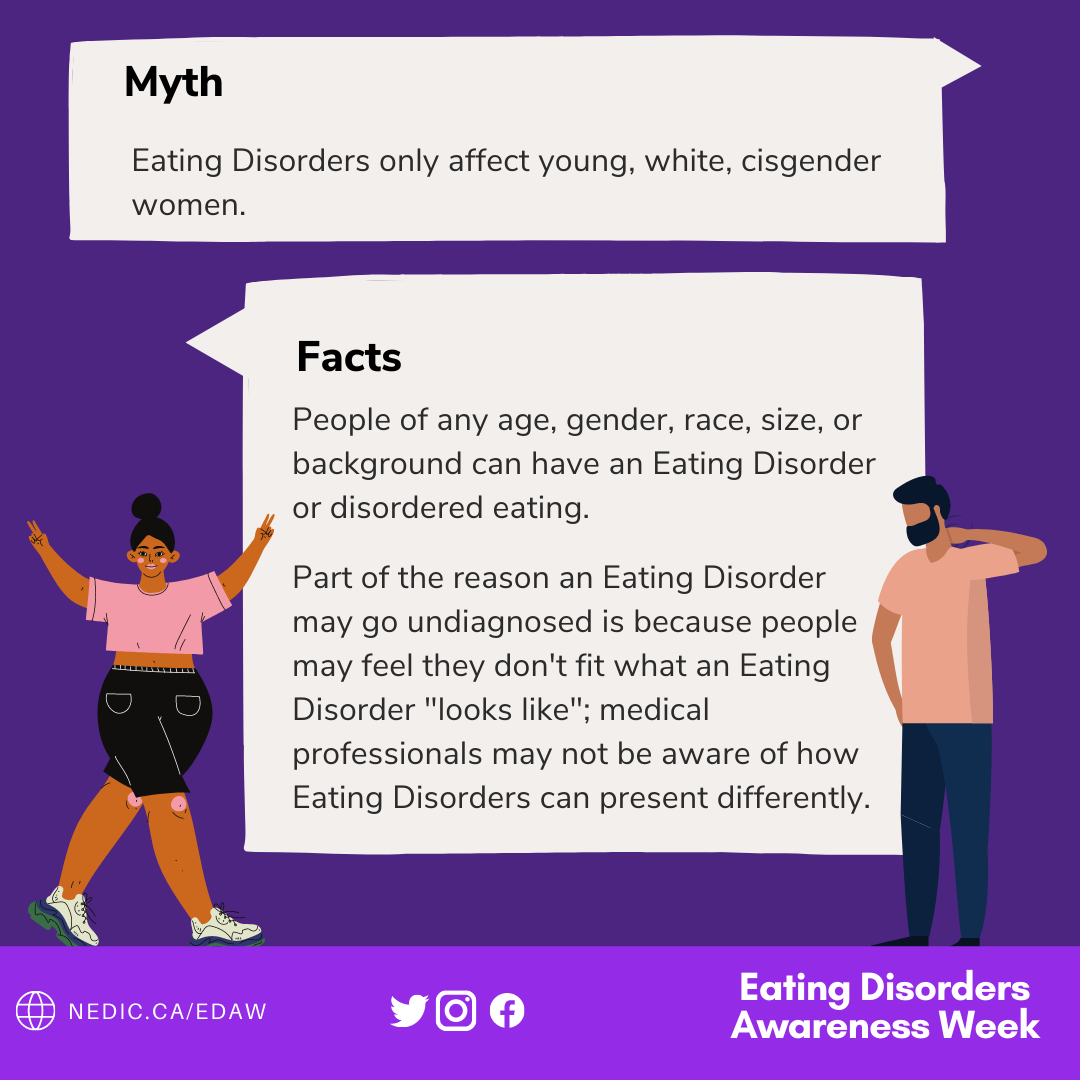
Facts
People of any age, gender, race, size, or background can have an eating disorder or disordered eating.
Part of the reason an eating disorder may go undiagnosed is because people may feel they don't fit what an eating disorder "looks like"; medical professionals may not be aware of how eating disorders can present differently.
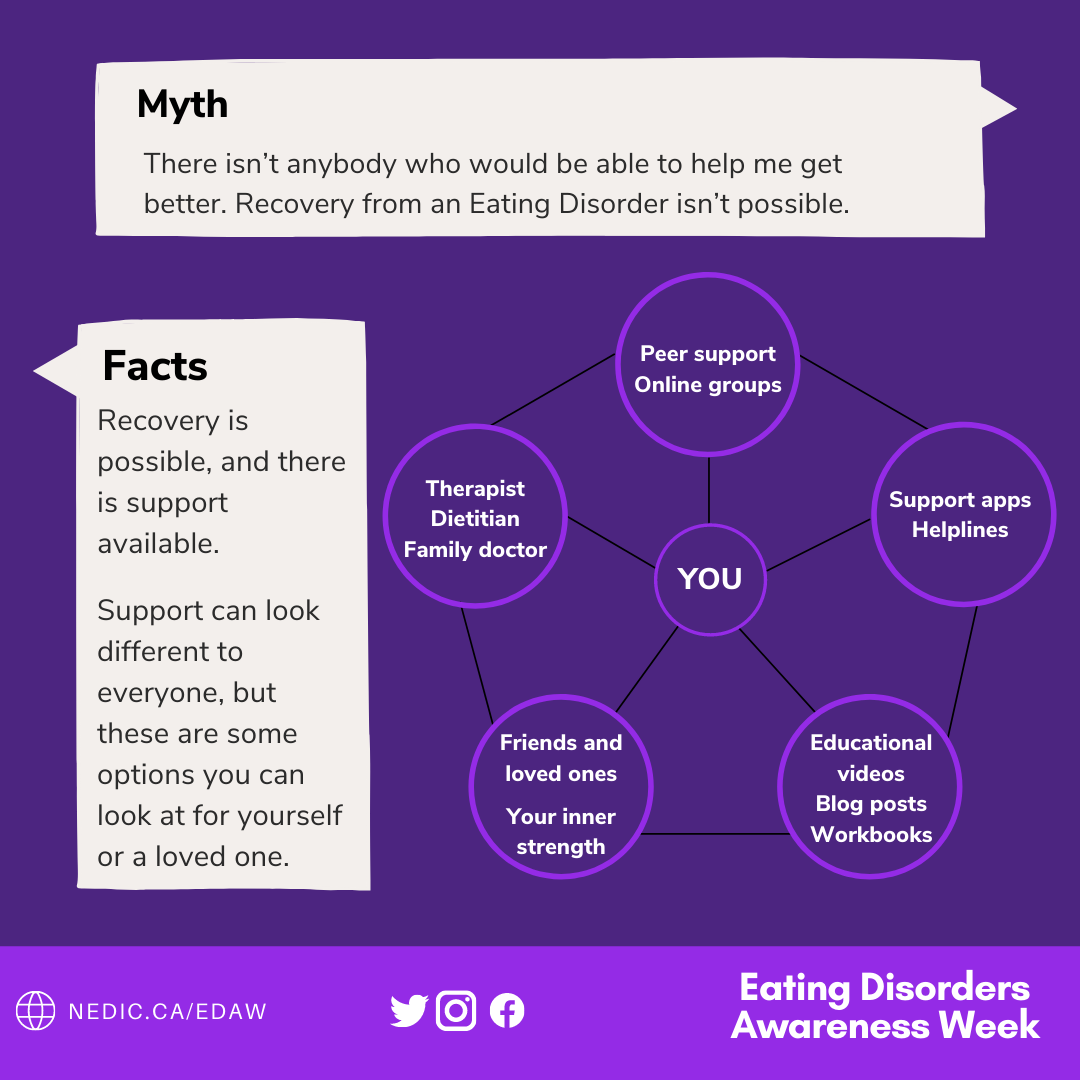
Facts
Recovery is possible, and there is support available.
Support can look different to everyone, but these are some options you can look at for yourself or a loved one.
(Peer support, online groups, support apps, helplines, educational videos, blog posts, workbooks, friends and loved ones, your inner strength, therapist, dietitian, family doctor)

Peer support, online groups, support apps, helplines, educational videos, blog posts, workbooks, friends and loved ones, your inner strength, therapist, dietitian, family doctor